Naomi Campbell and the black models who changed the face of fashion
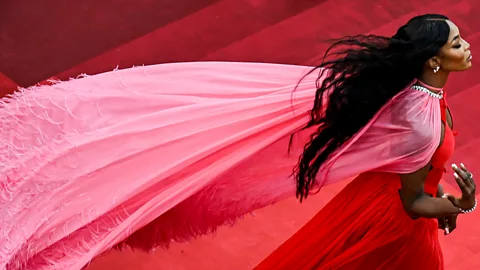 Getty Images
Getty ImagesAs a new exhibition opens in London exploring the career of Naomi Campbell, Britain's first black supermodel, a look at the women who forged a path in fashion – including the first black American Vogue cover model, Beverly Johnson.
"Do you want to be a model?" asked talent scout Beth Boldt as she approached a group of schoolgirls in London's Covent Garden. Fifteen-year-old Naomi Campbell stepped aside, thinking Boldt was talking to her fair-haired friends. But it was Campbell that Boldt locked eyes with. "I'm talking to you," she said.
The shy teenager would go on to become the most famous black model in history: a supermodel of extraordinary versatility – said to have the best "walk" in the business – as well as a media personality and advocate for equal rights in an industry where black people had long been sidelined.
 Martin Brading
Martin BradingCelebrating Campbell's 40-year career is the exhibition NAOMI: In Fashion, opening at London's Victoria & Albert Museum on 22 June. It charts Campbell's highs and lows, and features many of her most memorable outfits, including the blue 30cm-high Vivienne Westwood heels that famously toppled her on the runway in 1993.
Also on display is the silver Dolce & Gabbana couture gown she wore for her last day of community service, a five-day sentence for a misdemeanour assault powered by her infamous temper. Asked by Grazia Magazine why she dressed up for the occasion, she replied: "Why should they expect me to go looking bedraggled or something?"
Fighting for the right to be seen
It's perhaps this refusal to be diminished by society's expectations that helped make her French Vogue's first black cover girl in 1988. When her white supermodel friends were featured but Campbell was declined, Campbell pushed harder. She went to Yves Saint Laurent, one of Vogue's biggest advertisers, who agreed to withhold clothes and advertising until the magazine obliged.
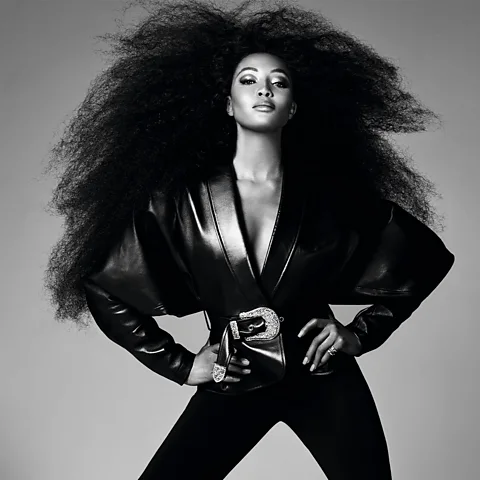 Steven Meisel
Steven Meisel"I definitely had to fight harder," says Campbell in the book that accompanies the V&A exhibition. "Some people were just being simply honest in telling me that they never thought of using a black girl. So I didn't always take it as racism. I just took it as 'Okay, you never tried, now it's time to try.'"
Campbell was quick to pay homage to other pioneers. Speaking to chat show host Michael Parkinson back in 2004, she said. "When I get a cover, I think that it's not just for me, it's for the generation of girls before me [and] after me."
One such role model who blazed a trail for changemakers like Campbell was Donyale Luna. But though the US model became the first black cover star of Harper's Bazaar in 1965, the result was disappointing: it was an illustration rather than a photograph – and her skin was pale pink.
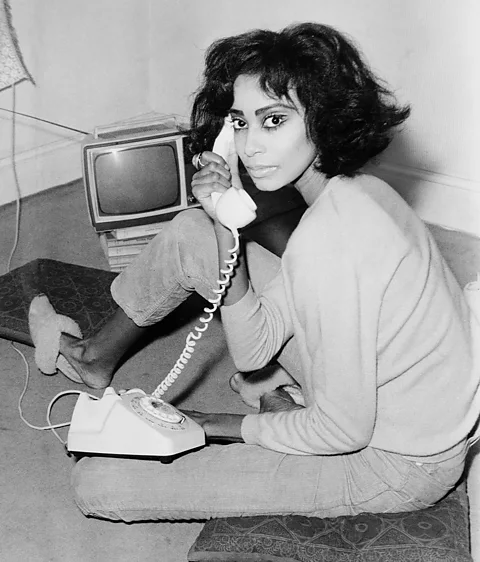 Getty Images
Getty ImagesAlso disappointing was the mixed public reaction to people of colour appearing on pages that had long been seen as the preserve of white people. In the US, some sponsors threatened to withdraw advertising revenue and some readers cancelled subscriptions. Nevertheless, the following year, British Vogue put Luna on its cover. This time her skin was darker, but her depiction as an Ancient Egyptian played on the trope of the "exotic" black woman, and typified the limited range of roles offered to women of colour at the time.
Questioning concepts of black beauty
"Historically, black women in white America have been called many things," wrote the US writer and model Barbara Summers in her landmark 1998 work, Skin Deep: Inside the World of Black Fashion. "Beautiful was among the last." Unpicking the social and historical context of notions of black beauty in her book, she notes the "impersonal … and often unlovely" depiction of black women in the 20th-Century arts and the internalisation of "a sad legacy of slavery", which she says dictated "the parameters of our existence from what we could wear to who we could be".
In the early 20th Century, new products such as skin lighteners and anti-kink hair ointments sent out a message that natural black characteristics needed correcting, causing what Summers describes as a "confusion" over what black beauty was. Meanwhile, lynchings in the US clearly communicated the dangers of entering white spaces. It wasn't until the civil rights movement of the 1950s and 60s that significant numbers began to mobilise against US racism.
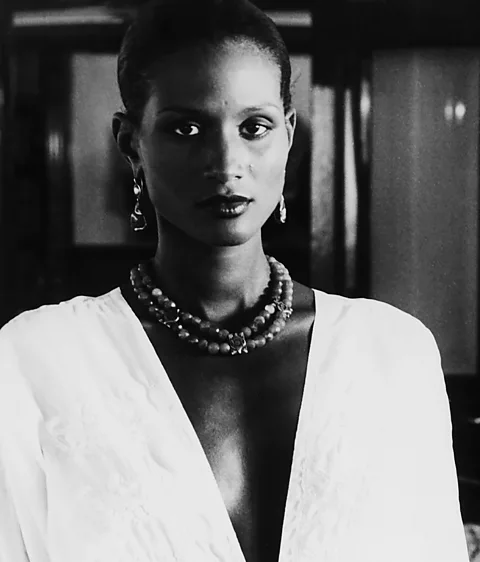 Alamy
AlamyNaomi Sims was an example of a new generation of plucky models who did not wait for permission to be invited into a predominantly white industry. Sick of being rejected by agencies, she went straight to the photographers, eventually landing magazine covers and walking for Halston and Giorgio di Sant'Angelo. She championed fellow American Beverly Johnson – who this year celebrated the 50th anniversary of being the first black American Vogue cover star – with a one-woman show, Beverly Johnson: The Face That Changed It All, based on her 2015 memoir. "She was so gracious to me and I said to myself that is how I'm going to treat the other young models," Johnson told BET last year.
In 1988, two iconic black models − Iman, originally from Somalia, and New York-born Bethann Hardison − founded the Black Girls Coalition in order to petition the fashion industry for equal representation and pay. Campbell joined a year later, and has since described Hardison as "a second mother". Hardison had walked in the legendary 1973 Battle of Versailles, a catwalk stand-off between European and US designers that marked a turning point in fashion history when modern US fashion houses, featuring an army of majestic black models, unexpectedly outshone the old guard of Parisian couture. "Fashion was never to be colonised in the same ways again," writes Summers.
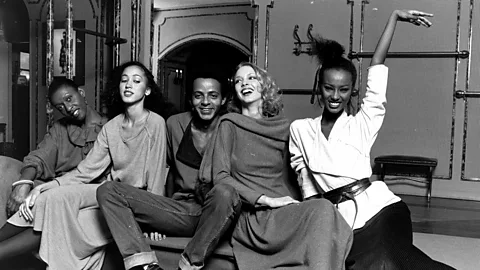 Getty Images
Getty ImagesOne of the Coalition's successes was its push for an all-black issue of Vogue Italia. The 2008 edition, featuring four different covers (including Campbell), sold out in the UK and the US within 72 hours. Edward Enninful, who styled the shoot, remarked: "I never thought I would be able to see something like this – my people, my race, wearing the collections, being gorgeous, chic, real women in that way. But the most important thing is: this proves we are bankable. We can sell."
Inspired by her fearless predecessors and her friendship with Nelson Mandela, who she met in the 1990s, Campbell's activism became central to her work. She is a huge advocate for African designers such as Marianne Fassler and Tiffany Amber, boosting their profile by walking in their shows and lending her support to Arise Fashion Week, which celebrates African fashion.
Model campaigners such as Campbell are gradually winning their battle. The Fashion Spot's diversity report on New York Fashion Week found that in spring 2015 just a fifth of the models were models of colour, compared to over half in spring 2022. But there's still work to do before models of colour feel entirely at home. Detroit-born model Megan Milan said in a viral TikTok post last year, for example, that she had to redo her make-up for a New York Fashion Week show as the artist was unskilled with black skin. "I look like a ghost," she lamented.
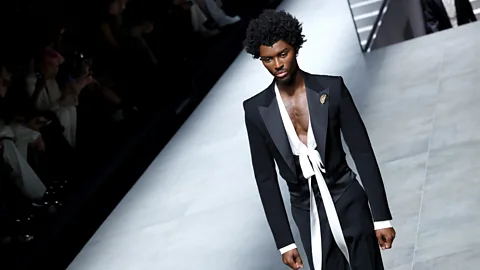 Getty Images
Getty ImagesFor British-Ghanaian model, visual image-maker and storyteller TJ Sawyerr, who has worked for Calvin Klein, Vivienne Westwood and Lacoste, a lingering issue is what he describes as the "performative tokenism" of some of the industry's interest in black models. "If you are acutely aware that your inclusion is on the basis of ticking a quota box or fulfilling a PR strategy, I think that for a lot of people that can feel devaluing," he tells the BBC.
Sawyerr's experience, however, has been predominantly positive. "Seeing examples of people who look like us… provided me with a huge amount of confidence to the point that there wasn't really a huge amount of questioning about the possibility of me as a black person entering the field," he says, giving the example of the US model Alton Mason, who he describes as "the first modern-day male supermodel", and referencing good friend and fellow Ghanaian Ottawa Kwami as "possibly one of the best examples of what the new-found accessibility of this industry is doing for people from marginalised backgrounds".
Now more commonly behind the lens, Sawyerr is paying it forward, recruiting black set designers, models, art directors and stylists for projects that, he says, "further the appreciation of our culture and where we've come from" and "celebrate individuals who may not get the shine I think they deserve". Sawyerr, like Campbell, grew up in South London, and has photographed the supermodel in what he remembers as "a really nice full-circle moment". He describes her as "a huge enabler", who "paved the way for a much more accessible commercial industry when it comes to black models".
Building on the success of her forebears and now lifting up emerging talent, Campbell has changed the face of fashion forever and blown apart the industry's narrow idea of beauty. "Black women have more DNA on this planet than anyone else," points out the US model Veronica Webb in the 2022 documentary Supreme Models. "We look 100 million different ways, and that should never be denied. No aspect of our beauty should ever be denied."
NAOMI: In Fashion is at the V&A, South Kensington from 22 June to 6 April 2025. The exhibition is accompanied by a book of the same name in which Campbell discusses 20 of her most iconic looks.
--
If you liked this story, sign up for The Essential List newsletter – a handpicked selection of features, videos and can't-miss news, delivered to your inbox twice a week.
